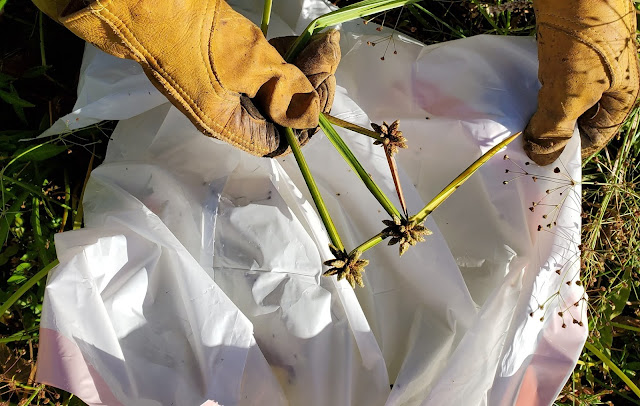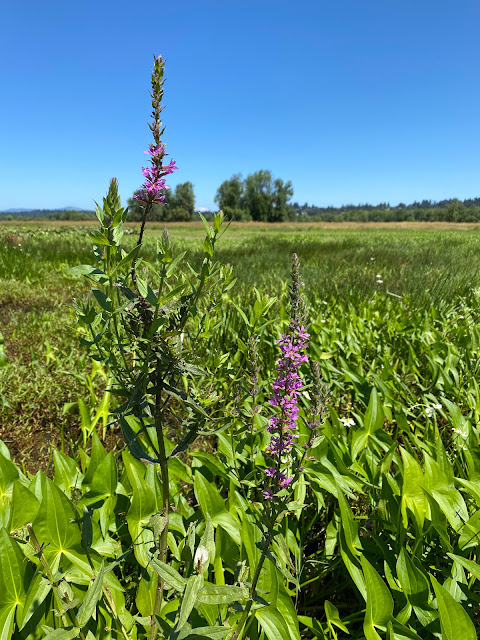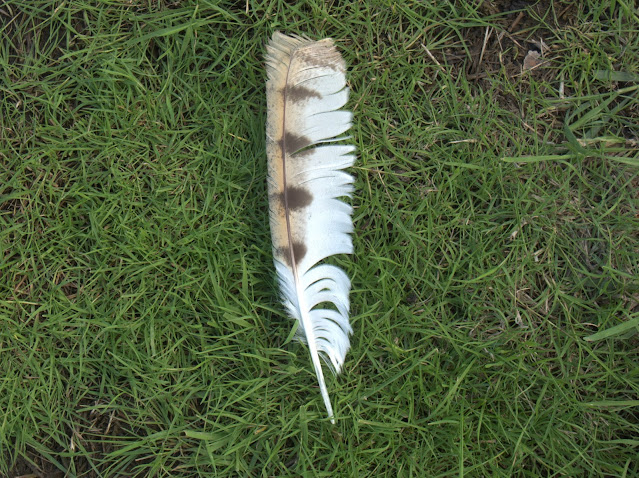September 3, 2020 - A Final Bulrush Sweep
On this day we took volunteers out to Middle Lake to complete a final scan for Bulrush and Purple Loosestrife. The purpose of this final scan was to make sure that we identified any Bulrush plants that we missed in our scans of Middle Lake earlier in the Bulrush season. On top of this, I asked the volunteers to keep and eye out for, and to flag any Purple Loosestrife plants that were found while searching. I also did my best to take the UTM coordinates of these plants with a GPS, so that when we come back in to spray with herbicide - finding the plants in the tall mess of cattails, sedges, and rushes will be much easier. By the end of the search party - we ended up locating one large Bulrush plant, that was fully re-flexed, and flagged about 20 Purple Loosestrife Plants. Definitely a successful day!
 |
A re-flexed bulrush plant located by one of our volunteers. Take a look at those giant seed heads! To learn more about the Bulrush plant - click here! |
 |
A Purple Loosestrife plant located in Middle Lake during the search party. |
Why Are we Targeting Rice Field Bulrush?
Rice Field Bulrush, also known as Bog Bulrush, is a perennial wetland plant species which is Native to Africa, Tropical Temperate Asia, and Europe. Due to the plant's invasive nature in rice fields, Rice Field Bulrush is considered one of the worst weed species in the world. Along with its global agricultural and economic impact, studies have also been completed regarding its potential to destroy wildlife habitat, limit biodiversity, and change the composition of native habitats.
Bulrush reproduces through seeds, rhizomes, and stolons, and with the sheer amount of seeds produced on a single stolon - it becomes clear how these plants can quickly overtake a wetland. Not only this, but the seeds and rhizomes of this plant are able to go into dormancy when conditions become too dry/unfavorable, and studies have also found that this weed is potentially resistant to certain herbicides - making it exceptionally hard to target.
This plant was first seen in the US in the early 1900's on the East Coast, and has been seen in California Rice fields since the 1940's. In 1999 however, Rice Field Bulrush was accidentally spread to Washington State - hidden in what was thought to be a native wetland seed mix purchased from California. After this native seed mix was spread on the Ridgefield National Wildlife Refuge - this made the Refuge the first official occurrence of this noxious weed in WA state, and in the years since then, an aggressive approach to eradicating this weed from the Refuge has been at the forefront of habitat restoration priority.
A large part of my job in the summers is to focus my efforts in planning for and leading volunteer search parties in the wetlands that are infested with this invasive species. This year has been quite a bit different having to adhere to strict COVID protocol, but by the end of this bulrush season we were successful in clearing a total of 4 wetlands of this noxious weed. I am so thankful to the volunteers that helped out in the wetland searches - our success would not have been possible without them.



Comments
Post a Comment